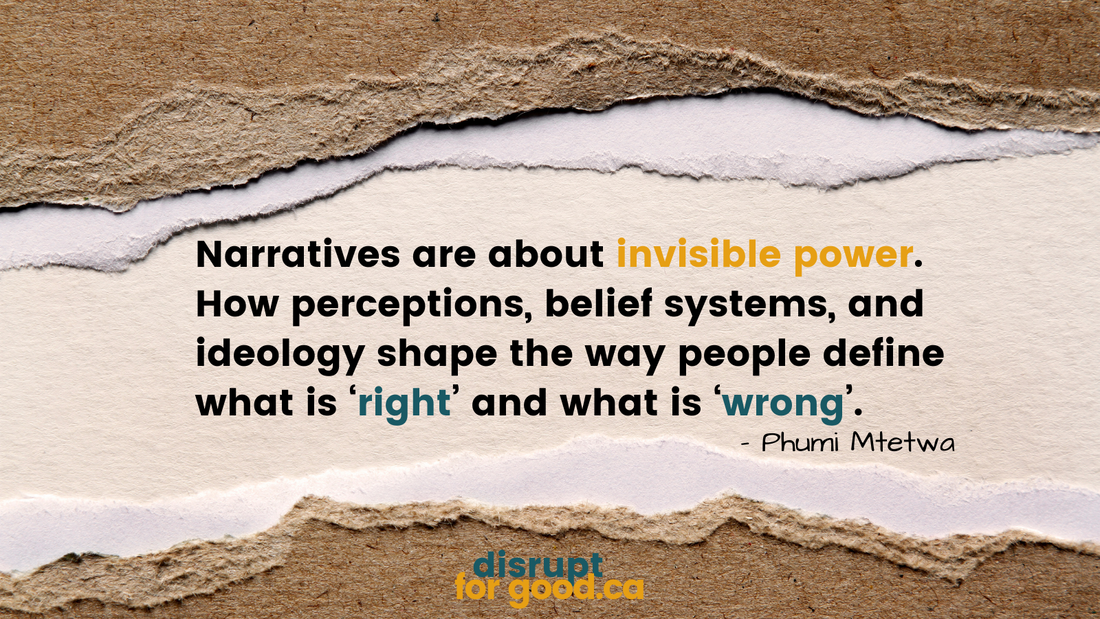|
What is a narrative? In its simplest term, a narrative is a story. In systems change advocacy, when we refer to narratives, we’re referencing the deeply held beliefs that shape people’s actions. It’s not any one story, it is the collection of stories, memes, tweets, videos, sermons, books, and dinner table conversations that either help maintain the status quo or give momentum to a change movement. There is a growing acknowledgement of the power these stories can have. Isabel Crabtree-Condor is a knowledge broker for Oxfam, and she describes narratives as the invisible force that hold things in place and prevents change, even shuts down conversations about change. In Crabtree-Condor’s book, Narrative Power and Collective Action: Conversations with people working to change narratives for social good. Part 1, she writes “For me, understanding narratives and what lies behind or under them, is one way of digging more consciously into that invisible web of forces that maintain the status quo.”
Here are some of my other favourite answers from the book to her question, “What are narratives?”
And from Part 2 of the same collection:
How narratives help or hinder Crabtree-Condor writes: “[Narratives] are also being used to persuade people that the status quo is inevitable, change is not possible, and participation or activism is pointless. They keep ideas that don’t serve the majority in place. … Social, public, or dominant narratives help to legitimize existing power relationships, prop them up, and make them seem natural.” Using narratives for good Narratives can also be used to reclaim power, and connect and mobilize communities to action. Often, rather than countering problematic narratives head on, it is more effective to provide alternate narratives (similar to what we have done here with income supports and substance use).
Want to explore further?
0 Comments
Leave a Reply. |
AuthorI'm Jennifer. I am an advocacy and communications strategist working with multiple charities and nonprofits. And I want to disrupt our sector for good. Archives
April 2024
Categories |


 RSS Feed
RSS Feed
